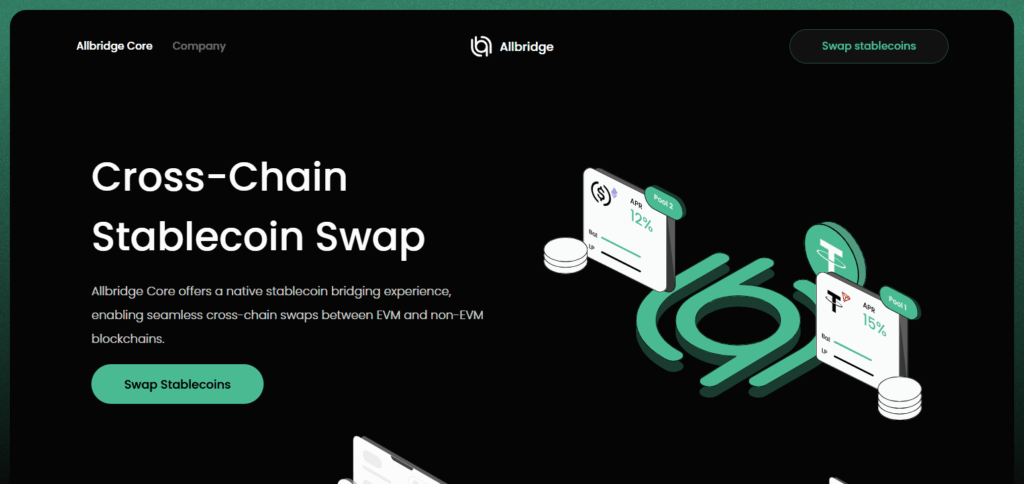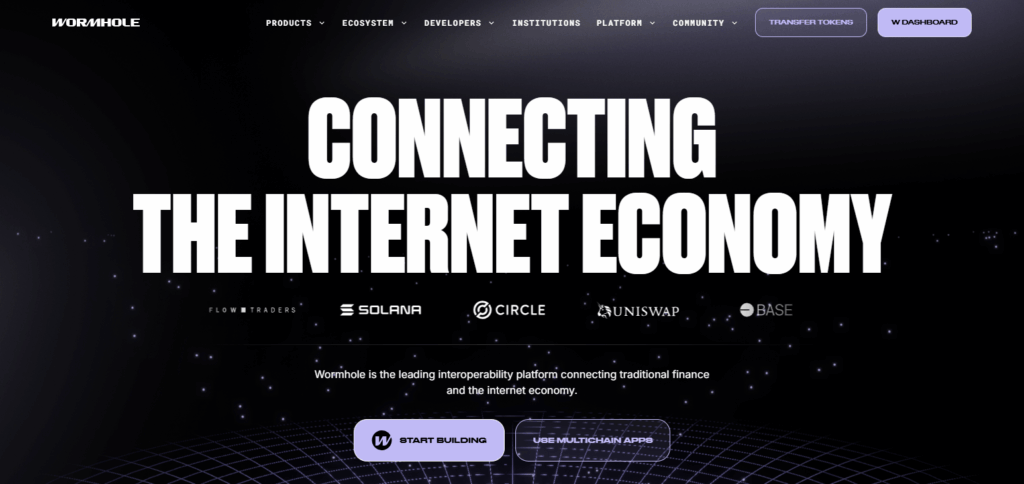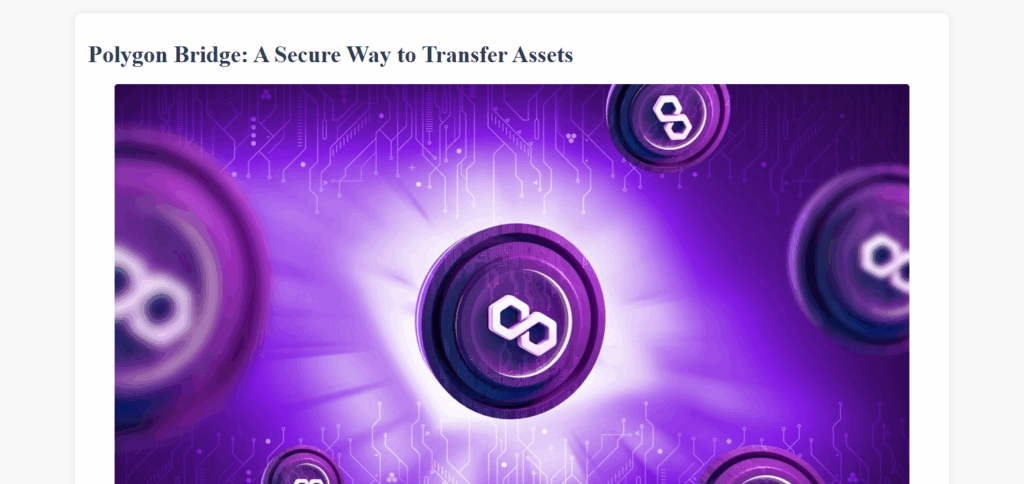In this article I will explain the reasons why stablecoin bridging tokens are popular. Bridging stablecoins allow users to cross different blockchain networks which increases their usability, decreases transaction costs, and enables faster transfers.
It provides novel possiblities within decentralized finances while improving stablecoin flexibility and usefulness for people all over the globe.
Understanding Bridging Tokens and Stablecoins
Stablecoins act as cryptocurrencies with value fluctuations only to a limited extent while pegged to fiat currencies or trusted collateral, the most common one being USD. Other examples are DAI, USDC (USD coin), and of course USDT (Tether).
They are widely employed for trading, payments, or even savings within the crypto industry because they mitigate the volatility problems created by traditional cryptocurrencies like Ethereum and Bitcoin.
Shifting these stablecoins from one blockchain to another with the use of cross-chain bridges is referred to as bridging tokens. An example of this would be bridging USD Coin (USDC) from Ethereum’s network to Binance Smart Chain or Avalanche.
This movement enables users to access stablecoins that were not originally issued on certain blockchains, thus granting new opportunities and benefits.
Why Bridging Tokens Is Gaining Popularity for Stablecoins
Interoperability with Other Blockchains
Interactable blockchains are unique with their respective traits, communities, and ecosystems. By bridging stablecoins, users and developers facilitate interoperability which is the transfer of assets between chains.
This allows stablecoins to be utilized in numerous decentralized finance (DeFi) platforms, decentralized exchanges (DEXs), and other blockchain applications within different networks.
Interoperability extends the functionality of stablecoins beyond their original chains, forming an integrated crypto ecosystem.
Mitigating High Transaction Costs
Users who bridge stablecoins do it to ease the burden of high fees on transactions. Networks such as Ethereum are renowned for their exorbitant gas fees during periods of congestion. Bridging stablecoins to low fee chains like Polygon, Binance Smart Chain, or Avalanche allows users to transact at a lower cost.
This is quite essential for ordinary transactions, small trades, or micro payments that are economically unfeasible with high-fee chains.
Improved Speed and Scalability
Stablecoins are bridged to faster blockchains in a bid to confirm transactions quicker and enable users to reap the benefits of faster transaction finality. Some blockchains offer near-instant settlement times as compared to Ethereum whose throughput can take minutes during busy times.
In DeFi ecosystems along with other trading environments where speed is important, speed makes a lot of difference. Unlocking stablecoin bridges permits faster trading, lending, and borrowing processes, improving user experiences and DeFi practicality and scalability.
Risk Mitigation and Portfolio Diversification
Increased bridging liquidity enables users to hold stablecoins on different chains which offers users diversification benefits. If one blockchain runs into technical difficulties, getting congested, or poses security concerns, users can fall back on accessible stablecoins on alternative chains.
In addition, the ability to hold stablecoins on multiple blockchains and networks mitigates the focus on single blockchain ecosystems, thus reducing exposures to systemic risks.
New Opportunities in DeFi Markets
Bridging stablecoins enables users to engage with blockchains that host different DeFi protocols, yield farming platforms, and even lending markets.
Users may lose access to certain opportunities such as high yield lending protocols offered on Avalanche which might only require USDC on Avalanche instead of Eth.
This adaptability prompts users to navigate through various DeFi platforms and in turn optimize their returns while also increasing capital efficiency.
Popular Bridges include:
Allbridge
Allbridge is a cross-chain bridging protocol that is non-custodial which means it provides a permissionless transfer of tokens and stablecoins. The protocol works with major chains and chains like Ethereum, Solana, BNB Chain, Avalanche.
Allbridge allows devs and users to connect ecosystems that are self-contained and need connection, enhancing interoperability. Users may smoothly and quickly bridge assets because of the intuitive interface and user experience it is built on.

Allbridge is audited to lower security risks, it is a prime focus as well. Allbridge is a solution to cross-chain integration for low fee and fast execution oscillating from intersecting stablecoins on DeFi or other assets used for trading.
Wormhole
Wormhole serves as an interconnecting cross-chain communication protocol of leading users blockchains like Ethereum, Solana, Avalanche, BNB Chain, and polygon giving them connectivity. Token, NFTs, and cross-chain relaying of messages transfer are done in a quick and secure manner over the chains.
Wormhole is found to be adopted at large scale in segments of decentralized finance especially for bridged stablecoins and other assets creating ease for users interfacing with different blockchain applications.

The protocol uses group of trusted guardians to guard and verify so that the enforce monitoring bring in transfer security enabling each governed relay ensured by active monitored. Enhancement and interoperability of blockchains are items wormhole ensures aiding the diverse audience scope of DeFi broadened.
Polygon Bridge
Polygon Bridge serves as the official link between Ethereum and the Polygon Network, allowing the transfer of assets like ERC-20 tokens and stablecoins. They offer a variety of bridges, including PoS Bridges that enable fast transfers and Plasma Bridges that are more secure.

Polygon Bridge is designed for DeFi activities and NFT trading as it lowers transaction costs and increases speed in comparison to Ethereum’s mainnet. The user interface is simple, which helps in easy bridging and users are able to have full custody of their assets throughout the bridging process. The bridge is useful for Polygon’s growing ecosystem and enables users to benefit from lower fees and fast confirmations.
Binance Bridge
Through Binance Bridge, users can transfer their assets cross-chain from other blockchains such as Ethereum and Bitcoin to the BNB Chain, and vice versa. Users can convert tokens into Binance-pegged tokens and the other way around; this increases the utility of the Binance ecosystem.
Popular cryptocurrencies and major stablecoins issued by Binance are also supported, which broadens the scope for users interested in exploring DeFi applications or trading on Binance platforms.

As is the case Binance’s other services, the bridge emphasizes prompt execution and minimal transaction costs, appealing to novice and experienced users alike. By removing the restrictions of interoperability and extending the usefulness of assets across chains, the bridge fosters a more integrated and systematic blockchain structure for users across the globe.
How Bridging Works for Stablecoins
Bridges work by burning tokens on the source chain and minting an equivalent number of tokens on the destination chain.
Bridges also allow users to reclaim their tokens on the original chain after ashes restoring the tokens and burning the equivalent minted ones.
This mechanism helps maintain the stablecoins supply, ensures it is not misused and averts double spending.
Key Benefits of Bridging Stablecoins Summarized
Cross-Chain Usability: Stablecoins become available on several blockchains, further interoperating within the crypto ecosystem.
Cost Efficiency: Economic rationale is furthered on cheaper blockchains with reduced transaction fees.
Faster Transactions: Speedier network facilitates rapid settlement which is critical for DeFi activities.
Risk Mitigation: Dependency on a single blockchain is lowered when diversifying stablecoin holdings across chains.
Access to Diverse DeFi: Provides access to a larger range of lending, farming, and staking activities outside the native chain.
Challenges and Considerations
Risk of being hacked: A multitude of hacks makes bridges vulnerable because they are complicated structures. Users need to have faith in the security measures of the bridging service.
Fines and Slippage: Some services incur charges and the possibility of slippage while other services charge fees that are sometimes unavoidable.
The Confounding Matrix Woven: The multifaceted crypto world replaces traditional banking making it complicated with bridging tokens, wallets, and several blockchains. New users stand at the terminus of numerous crossroads.
The Future of Bridging Stablecoins
Stablecoins unlock many possibilities in DeFi, and with crypto expanding, stablecoins will further broaden their reach with bridging.
Meanwhile, new generation bridges and layer 2 solutions will attempt to minimize both risk and cost, allowing the effortless transfer of cross-chain stablecoins.
This advancement in relations may someday advance into a multi-chain sphere where tokens and stablecoins circulate unrestricted, providing access to an enhanced framework for decentralized finance.
Conclusion
Ultimately, Bridging tokens is gaining more popularity with stablecoins since it improves interoperability, reduces costs, increases the speed of transactions, diversifies risk, and unlocks new DeFi opportunities.
The challenges may be significant, but the advantages are greater—the downsides do not diminish the benefits for many. With the development of technology, bridging stablecoins will continue to serve as an essential element of crypto systems, enhancing a more integrated and efficient digital economy.









